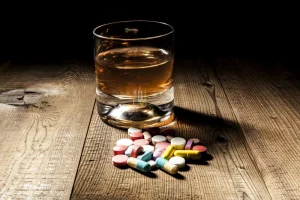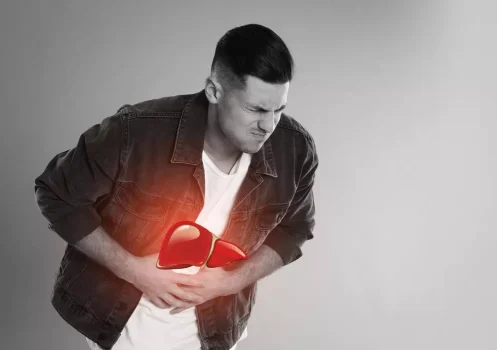Receptors and Channels Associated with Alcohol Use: Contributions from Drosophila PMC

As an update to traditional protein tagging, the tissue-specific tagging of endogenous proteins (T-STEP) was created.143 The T-STEP method simultaneously RFP-tags an endogenous protein and then allows tissue-specific rippase recombination to switch the tag to a GFP signal. Given that the actions of ethanol on dopamine and serotonin receptors appear to be circuit specific, these tools would be especially helpful in resolving the changes in receptor expression in discrete circuits before and after different alcohol exposure paradigms. This approach can also be tremendously useful for determining pre- versus post-synaptic localization of different receptors.
National Institute on Alcohol Abuse and Alcoholism (NIAAA)

Therefore, scientists are paying increasing attention to the integration of communication systems in the brain. Although the study of neural integration is in its infancy, enough has been learned to help guide future research. This article suggests mechanisms by which alcohol consumption may affect multiple neurotransmitter systems to influence behavior. A new study from McGill University suggests that people who are at risk for becoming alcoholics have a distinctive brain response when drinking alcohol in comparison to those at low risk for alcohol-use problems.

Activity Boundaries
- In contrast to other stimuli, alcohol-related stimuli maintain their motivational significance even after repeated alcohol administration, which may contribute to the craving for alcohol observed in alcoholics.
- These findings provide evidence that an “as-needed” prescription of nalmefene may be an effective treatment for alcohol dependence for some.
- Alcohol is widely accepted in the society and consumed by everyone, young and the old alike, women and men included.
- These include the distinct nature of rewards and costs (hypothetical versus real), varying reward magnitudes in both tasks (large versus small), and differences in task structure (fixed versus variable alternative option).
- Glutamate is the major excitatory neurotransmitter in the brain and it exerts its effects through several receptor subtypes, including one called the N-methyl-D-aspartate (NMDA) receptor.
A major theme of recent alcohol research has been to leverage animal models and circuit-analysis approaches to link neural circuit activity with specific aspects of AUD [95]. For example, in mice, chronic alcohol exposure decreased the excitability of OFC outputs to the DMS [96], and alcohol-induced synaptic plasticity in the OFC has been linked to excessive alcohol use in both mice and monkeys models [97,98]. In addition, using a combination of activity dependent genetic tools and chemogenetic manipulations, a small ensemble of mPFC neurons was shown to serve as a memory to cue induced relapse to alcohol use [99]. Interestingly, like the molecular mechanisms that gate the development of AUD [3], STOP mechanisms also occur on the level of circuitries [100]. Specifically, a subset of infralimbic cortical neurons serve to protect against relapse to alcohol use [100]. In Drosophila, a mutant named intolerant was identified in a genetic screen for abnormal ethanol sensitivity and tolerance.
How to recognize the signs of mental health issues
Remember, the reward center in your brain releases dopamine in response to pleasurable experiences. Experts are still studying exactly how dopamine, a neurotransmitter, works in the context of addiction. Many believe it trains your brain to avoid unpleasant experiences and seek out pleasurable ones. “Intoxication occurs when alcohol intake exceeds your body’s ability to metabolize alcohol and break it down,” explains Amanda Donald, MD, a specialist in addiction medicine at Northwestern Medicine. Thiamine deficiency in alcohol dependence occurs because of poor absorption of thiamine from the GI tract, impaired thiamine storage and reduced thiamine phosphorylation in the brain, reducing the amount of active thiamine in the brain. Naltrexone is an opiate-receptor antagonist and has been shown to limit cravings by reducing the positive reinforcement effect of alcohol consumption.
- The dysfunction of these systems is responsible for acute alcohol intoxication, alcohol dependence, and withdrawal syndrome.
- For example, Yoshimoto and colleagues[11] and Gongwer and colleagues[23] found that although HAD and LAD rats differed in their basal level of extracellular DA, they did not differ in CNS DA release after intraperitoneal injection of ethanol.
- Based on their task performance, participants received a flexible payment consisting of 1 cent for each apple they collected.
- Rogdi, an atypical leucine zipper named after one of Pavlov’s dogs, was recently shown to control GABA transmission in mammals.33 However, Rogdi’s role in AUD has not yet been investigated.
Interestingly, those with the poorest impulse control — who would be considered most at risk of relapse after a period of sobriety — responded best to the treatment. These findings could explain why men are more than twice as likely as women to develop an alcohol use disorder. Parkinson’s disease and certain metabolic disorders, for instance, can deplete dopamine. Activities such as eating, hugging and exercising can generate dopamine production in the brain.

Unlock a secret to managing ADHD with a “dopamenu” – a creative way to boost dopamine levels and transform your daily routine for better focus, motivation, and joy. Warm colors indicate increased connectivity following dopamine depletion, whereas cool colors indicate decreased connectivity following dopamine depletion. We assessed selective attention capture using a dot-probe task modified from our previous studies assessing AB toward smoking cues in cigarette smokers [62, 63] (See Supplementary Materials). Faster response times (RT) in trials in which the target was congruent with the alcohol image versus the neutral image indicates AB toward alcohol-related cues via selective attention capture. In a retrospective study of 151 schizophrenic patients with alcohol dependence, 36 patients received the atypical antipsychotic medication clozapine.

Reinforcement and Addiction
Dopamine is an important neurotransmitter involved in reward mechanism in the brain and thereby influences the development and relapse of AD. It has been posited by[5] that the negative-affective state induced by alcohol withdrawal and especially alcohol and dopamine the increase in anxiety[6] is a major driving force in the propensity for relapse to alcohol-seeking behavior. The mechanisms involved behind alcohol sensitization, tolerance, withdrawal and dependence are discussed in the following sections.

